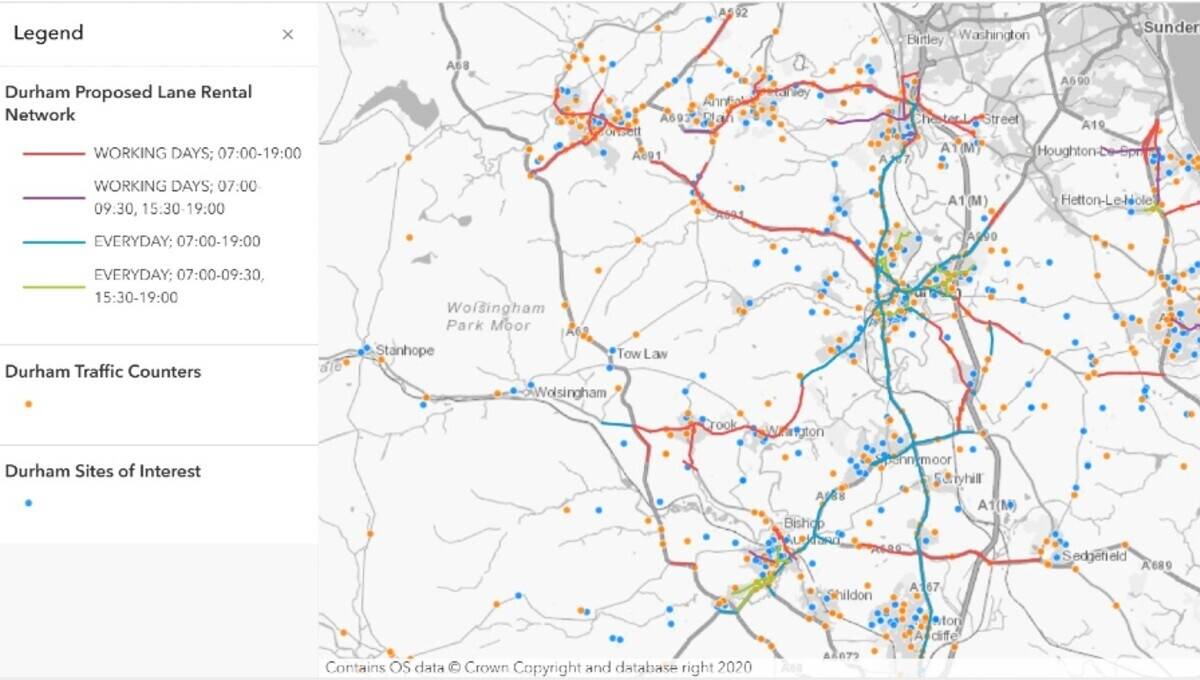Through the use of Cambridgeshire County Council's Public Right of Way data, Huntingdonshire District Council saw improvements in internal systems and was able to identify premises not previously recorded, generating an income of £50K
What problems were they trying to solve?
Public rights of way (PRoW) refers to paths which the public has a legally protected right to pass and re-pass for the purpose of walking and other leisure activities. PRoWs is part of a wider public highway network and are sometimes difficult to identify. The county's role within is to manage, make accessible and ensure safety on the highway network. However, districts tend not to have a direct interest in the highway network except as a general information tool. Because of this, there tends to be reluctance with some districts loading PRoWs information/data on to the Local Land and Property Gazetteer (LLPG) as they tend to only be concerned with streets that have properties on them. The problem is therefore that some of these rights of way may have properties on them but it is not until they are included in the LLPG that these are identified.
Solution
Updates to PRoWs in the LLPG were provided by Cambridgeshire County Council who made their data available for each district within the county. Huntingdonshire District Council was the second District to upload the PRoWs data, included 1350 PRoWs, onto their gazetteer. The council added spatial data from Cambridgeshire County Council. This enabled Elementary Street Unit Records (ESUs) to be added to the Gazetteer. As each ESU was added the surrounding area was viewed to see if any BLPUs (Basic Land and Property Units) could be created.
Outcomes and benefits
There were numerous outcomes and benefits from this work. Some were just clarifying things already known, whereas others highlighted areas where significant information had been missing.
One particular outcome included the identification of premises that had not previously been recorded on the non-domestic rates (NDR) list including a sewage treatments works. This prompted a look at all sewage treatment works where it was found that another two were also not billed for NDR. These were then passed to the Valuation Office Agency (VOA) and have now been rated. The annual combined charge this year for these three properties is £50K.
Additional back charging collectively brought in £230k in the first year of billing. At a time when the Huntingdonshire District Council, along with other local authorities are looking to either cut cost or identify new income, the additional annual income of £50k in perpetuity is a pleasing, unexpected bonus.
Other benefits include improvements in internal systems such as planning, which is particularly useful as there is a statutory duty to advertise developments that may affect a PRoW. Operations also saw benefits, as, if fly-tipping occurs on a PRoW the incident can now be attached to the Street BLPU. Not only this, call centre's CRM saw improvements in being able to use the Street BLPU record to record any incidents and Leisure saw benefits as they are able to use the PRoWs to assist in identifying Health Walks.
External users such as the emergency services also benefited from this work by being able to see the PRoWs, as well as additional BLPUs of Sewage Treatment Works, woods and ponds.
This shows how the LLPG uses LSG data (specifically PRoWs), and the internal and external benefits that have been derived from adding this dataset to the LLPG as well as the outcome of data matching to the LLPG.



